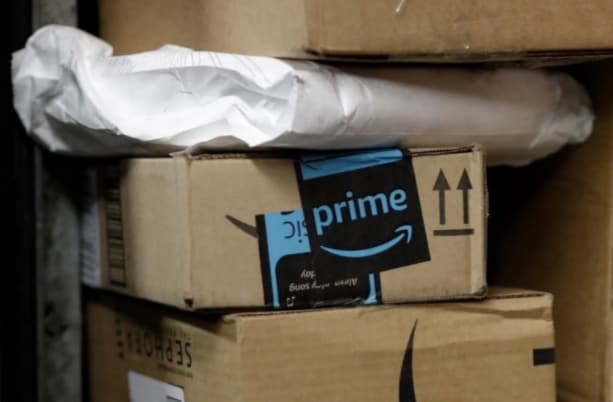
After sending shock waves through the grocery and health-care industries in recent weeks, Amazon dropped another bombshell Friday morning: The online giant plans to test a new delivery service for businesses beginning this fall, in the hope of speeding up the fulfillment process for third-party items, according to a person familiar with the matter.
The reaction was swift: Shares of FedEx and UPS stock fell as much as 5 percent apiece, as investors fretted that Amazon’s new service could chip away at revenue — and profits — for the country’s largest delivery services.
“In a move that will send shivers down the spines of the traditional delivery companies, Amazon has finally decided to try its hand at fulfillment,” Neil Saunders, managing director of research firm GlobalData Retail, wrote in a note to clients. “This leaves delivery firms with the unattractive prospect of losing share in their most lucrative and profitable markets.”
But some analysts said the panic was premature. Amazon, which began as an online bookseller two decades ago, has grown into a powerhouse involved in a number of businesses, including cloud computing, drones and moviemaking. But the shipping and delivery business is a costly and complex one, analysts said, and it could take Amazon decades — and tens of billions of dollars — to compete with the likes of FedEx and UPS.
And although Amazon has upended a number of businesses in its 24 years, it has also had its share of missteps, including failed attempts to get into the auction and travel businesses. (Jeffrey P. Bezos, the founder and chief executive of Amazon, also owns The Washington Post.)
“There is no reason to assume FedEx and UPS are cooked just because Amazon is dipping its toes in the water,” said Anthony Chukumba, a senior research analyst at Loop Capital Markets in Chicago. “Everybody loves to talk about Amazon’s successes, but nobody talks about its failures. How many people are rocking Fire Phones right now? Amazon is really good at a number of things, but it isn’t infallible.”
The pilot program, set to begin later this year, would include a handful of sellers located in one Zip code in Los Angeles, according to the person familiar with the matter, who spoke on the condition of anonymity to discuss the so-far private plans. The company may eventually expand to other markets and deliver items directly to consumers, that person said, but the person added that the program was still in the early planning stages. The Wall Street Journal reported on the plans earlier.
“We’re always innovating and experimenting on behalf of customers and the businesses that sell and grow on Amazon to create faster lower-cost delivery choices,” a spokeswoman for Amazon said in an email.
It would take Amazon 30 years and $30 billion to replicate the networks that FedEx and UPS already have, Chukumba said. Although Amazon has been beefing up its delivery capabilities in recent years, with cargo planes, trucks and same-day delivery drivers, he said its operations are still much smaller than those of the nation’s largest delivery companies.
“Amazon leases 40 planes, FedEx has 659 — there is no comparison,” Chukumba said. “Nobody has better technology than Amazon does, but you need more than that: You need planes and trucks and people and delivery hubs. Let’s not assume that this will be an overnight success.”
In a brief statement, a spokesman for FedEx said the idea that Amazon’s new delivery service would vie with FedEx and UPS “demonstrates a lack of basic understanding of the full scale of the global transportation industry.” UPS did not respond to requests for comment.
Chukumba pointed to another example of an international powerhouse that tried to conquer the U.S. delivery market: DHL, the German logistics company that has a large presence in Europe and Asia. The company spent more than $600 million trying to compete with UPS and FedEx in the early 2000s. It built regional hubs throughout the country and hired thousands of workers.
“But the effort fell flat on its face,” Chukumba said. “DHL eventually exited the market with hundreds of millions of dollars in losses.”
Others, though, were less skeptical of Amazon’s efforts and said they were a natural next step for a company that has invested heavily in logistics technology and infrastructure.
“This is no surprise at all,” said Frank Poore, chief executive of CommerceHub, a tech company that helps retailers improve shipping and logistics. “Amazon’s packages are overwhelming the system — and if same-day delivery is Amazon’s priority, there isn’t a national same-day delivery service they can just tap into. It makes sense to do this on their own.”
